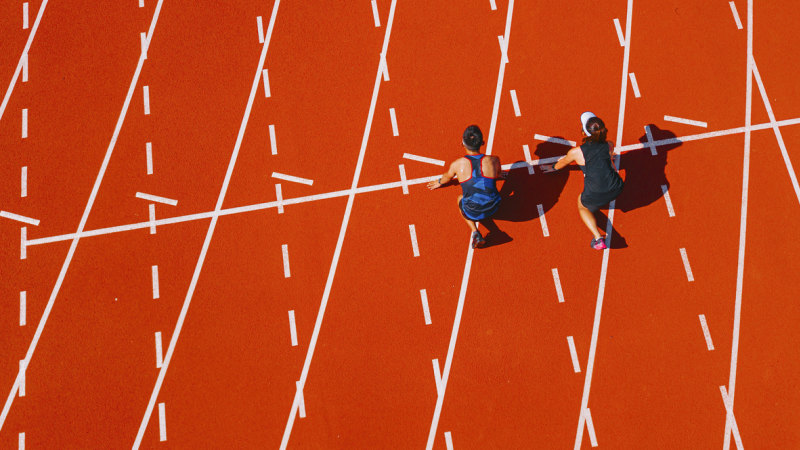That’s a hard pill to swallow for athletes looking to return to their previous selves as soon as symptoms subside. And it’s not easy to tell runners to slow down when many of their goals are to speed up.
In June 2020, Elliott published a protocol that has evolved and been adopted by other physicians as more data has become available on the virus and how it affects athletes. The initial protocol pointed to a six-stage gradual return to play, starting with a minimum rest period of 10 days and working up to increased frequency, duration and intensity of training sessions.
“You will always have another competition, another race, another training session.”
In the two years since, doctors have distinguished how to direct athletes based on above-neck symptoms and below-neck symptoms. Patients who have above-neck symptoms tend to recover more quickly and are able to return to athletics faster than those with below-neck symptoms who may suffer from fatigue, aches, pains and lung or heart issues.
That distinction – along with patients who test positive but remain asymptomatic – helped Elliott adjust his guidance to a five-stage protocol, one that better serves athletes looking to return to training. Patients now can skip ahead to different stages of the protocol depending on their symptoms and their severity.
And in the year of post-vaccine data, doctors have found that pushing the pace or intensity in training sessions can dramatically backfire.
Loading
“They are used to solving all problems by trying harder,” Olin, who has worked extensively with Olympic athletes, said. “And COVID-19 is seemingly unique if you push too hard – if you train through this – there’s this phenomenon of the setback, one that’s analogous to a hamstring injury, where if you were getting a little bit better and then you try to drop the hammer for a workout and you are three months back.”
It’s a sentiment doctors and experts are sharing even more widely post-vaccines, warning of regression if athletes return to high intensity training or racing before their body is ready.
“You will always have another competition, another race, another training session,” Elliott echoed.
“But you only have one body,” he added. “You’ve got to look after it.”
This article originally appeared in The New York Times.
Make the most of your health, relationships, fitness and nutrition with our Live Well newsletter. Get it in your inbox every Monday.
Stay connected with us on social media platform for instant update click here to join our Twitter, & Facebook
We are now on Telegram. Click here to join our channel (@TechiUpdate) and stay updated with the latest Technology headlines.
For all the latest Life Style News Click Here
For the latest news and updates, follow us on Google News.

